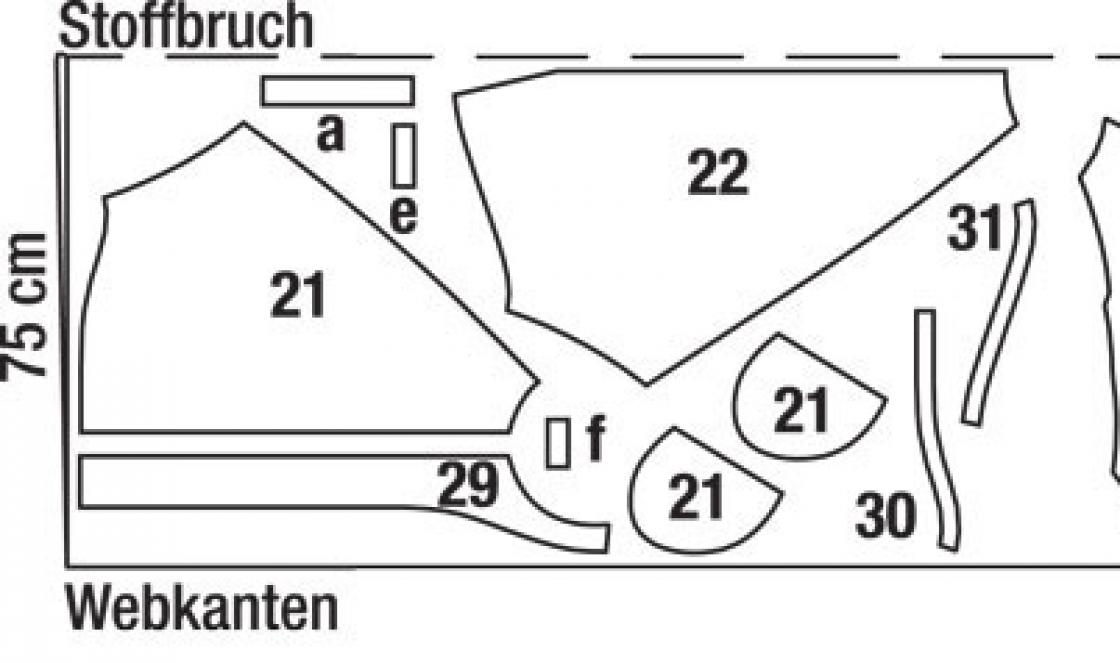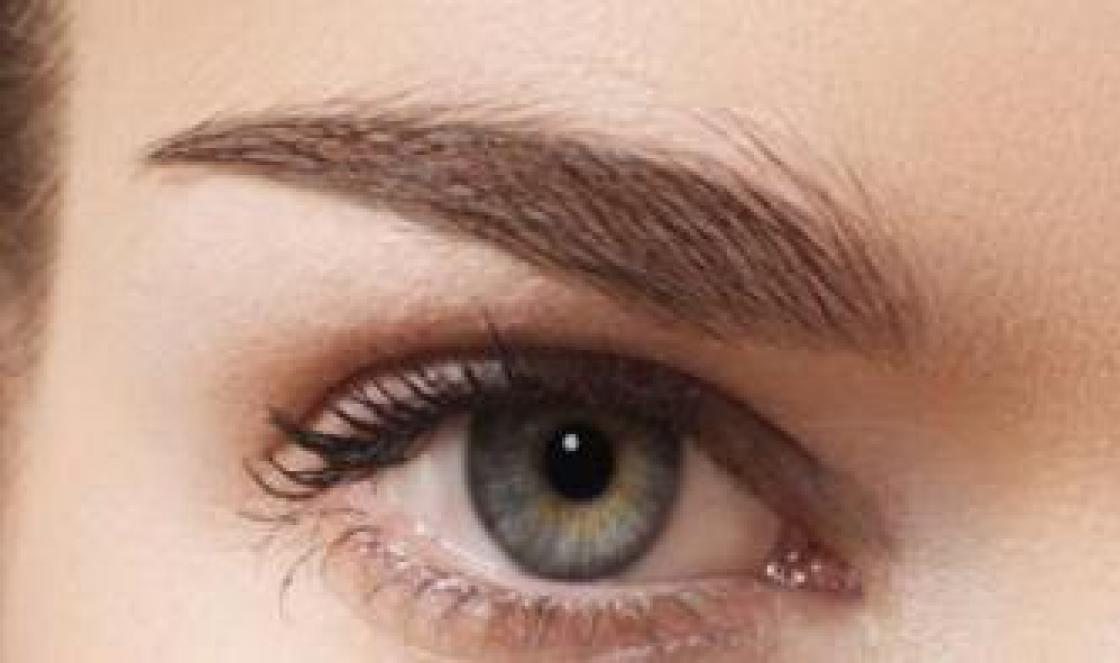Intercellular contacts are specialized protein complexes through which neighboring cells come into mutual contact and communicate with each other
The extracellular matrix is a dense network of proteins located between and formed by cells
Cells express receptors for extracellular matrix proteins
Extracellular matrix proteins and cell-cell junctions control the three-dimensional organization of cells in tissue, as well as their growth, motility, shape and differentiation
One of the most important events in the evolution of living beings was the appearance multicellular organisms. As cells evolved a way to group together, they acquired the ability to form communities in which different cells specialized in function. If, for example, two single-celled organisms "join forces", one can imagine that each would specialize in performing certain functions necessary for successful growth and reproduction, leaving the rest to its partner.
For education simple multicellular organism or tissues of a more complex organism, cells must be securely attached to each other. As shown in the figure below, for animal cells this attachment can be achieved in three ways. First, cells directly attach to each other through the formation of intercellular junctions, which are special modifications of the cell surface of neighboring cells. These contacts are visible in an electron microscope. Secondly, cells can interact with each other without forming contacts, using proteins that do not form such specialized regions. Third, cells connect to each other indirectly by attaching to a network of extracellular matrix (ECM), which contains molecules located in the intercellular environment.
Cell attachment occurs due to the formation of contacts of their surface with the extracellular matrix.
However, the formation multicellular organism is not as simple a task as attaching several cells to each other. The proper functioning of such cell communities is ensured by their effective interaction and division of labor between them. Cell-cell junctions are highly specialized areas in which cells are connected to each other through membrane-bound protein complexes. There are several different types of intercellular contacts, each of which plays a specific role in the communication of cells with each other.
Squirrels, forming gap junctions, enable cells to communicate directly with each other, forming channels through which small cytoplasmic molecules are exchanged. Proteins that form tight junctions serve as a selective barrier that regulates the passage of molecules through the cell layer and prevents the diffusion of proteins in the plasma membrane. Adhesive junctions and desmosomes provide mechanical stability by linking the cytoskeleton of contacting cells, allowing the layer of cells to function as a single unit. These contacts can serve as signal transmitters, translating cell surface changes into biochemical signals that propagate throughout the cell.
Diagrams of the structure of intercellular contacts of epithelial cells (left),contact adhesive complexes of cells of non-epithelial origin (right) and complexes of cells with the extracellular matrix (bottom).
The main component classes (MCCs) are also shown.
Various types of proteins are also known that are involved in contactless cell interaction. These proteins include integrins, caderins, selectins, and immunoglobulin-related molecules that mediate cell adhesion.
All cells, even the most primitive single-celled organisms, have the functions of recognizing the external environment and interacting with it. Even before the advent of cellular communities, cells had to attach to and move around surfaces. Thus, cell matrix adhesive structures formed early in evolution. As shown in the figure below, in multicellular organisms, the space between cells is filled with a dense structure made of proteins and sugars called the extracellular matrix. The extracellular matrix is organized into fibers, layers and film structures.
In some tissues extracellular matrix is in the form of complex layers called the basal lamina and is in direct contact with the cells. The proteins that make up the extracellular matrix are of two types: structural glycoproteins, such as collagen and elastin, and proteoglycans. These proteins give tissues strength and elasticity, and also serve as a selective filter that controls the flow of insoluble components between cells. Proteoglycans exhibit hydrophilic properties and maintain an aqueous environment between cells. When cells migrate, the extracellular matrix functions as a supporting structure to enable their movement.
Cells secrete extracellular matrix components. They themselves form this external support system, and, if necessary, can change its shape due to degradation and replacement of surrounding areas of the matrix. At the moment, the issues of controlling the assembly and degradation of the extracellular matrix are of significant interest, since they play an important role in the development of multicellular organisms, in wound healing, and in the formation of malignant tumors.
Cell contacts with the extracellular matrix are formed due to cell surface receptor proteins, which, when collected together, form island-type structures (patch) on the surface of cells and which connect the extracellular matrix located on the outside of the plasma membrane with the cytoskeleton on the cytosol side. As with some cell-cell contacts, some of these proteins form ordered complexes connecting the cell surface to the cytoskeleton. These proteins have much broader functions than just “cell suckers”; they are also involved in many signal transduction processes and provide cells with the ability to communicate with each other.
Various cells together with their extracellular matrix, they form tissues that are characterized by a high degree of specialization. Cartilage, bone, and other types of connective tissue can withstand strong mechanical stress, while others, such as the tissue that forms the lungs, are not strong but are highly elastic. The balance between strength, elasticity and three-dimensional structure is carefully adjusted, and the components of each fabric perform their functions in cooperation with each other. Thus, the organization and composition of the tissue corresponds to the function performed by the organ; for example, muscles are completely different from skin, and thank God!
Intercellular contacts and cell attachment to the matrix are not limited to the cell surface. In many cases, proteins must be anchored in the membrane strongly enough to withstand mechanical forces. This requires their association with the cytoskeleton, which essentially provides structural support to the cell. The presence of the cytoskeleton also prevents the lateral displacement of receptors in the plane of the membrane, “holding” them in place. Along with this, signal transduction processes regulate the assembly of intercellular contacts and maintain them. The cytoskeleton and signaling mechanisms play an essential role in cell adhesion.
Intercellular matrix is a supramolecular complex formed by a complex network of interconnected macromolecules.
In the body, the intercellular matrix forms such highly specialized structures as cartilage, tendons, basement membranes, and also (with secondary deposition of calcium phosphate) bones and teeth. These structures differ from each other both in molecular composition and in the ways of organizing the main components (proteins and polysaccharides) in various forms of the intercellular matrix.
Chemical composition intercellular matrix
The composition of the intercellular matrix includes: 1). Collagen And elastin fibers . They give the fabric mechanical strength, preventing it from stretching; 2). amorphous substance in the form of GAGs and proteoglycans. It retains water and minerals and prevents tissue compression; 3). non-collagenous structural proteins - fibronectin, laminin, tenascin, osteonectin, etc. In addition, it may be present in the intercellular matrix mineral component - in bones and teeth: hydroxyapatite, calcium, magnesium phosphates, etc. It gives mechanical strength to bones, teeth, and creates a reserve of calcium, magnesium, sodium, and phosphorus in the body.
Function of the intercellular matrix
The intercellular matrix performs various functions in the body:
· forms the framework of organs and tissues;
· is a universal “biological” glue;
· participates in the regulation of water-salt metabolism;
· forms highly specialized structures (bones, teeth, cartilage, tendons, basement membranes).
· surrounding cells, affects their attachment, development, proliferation, organization and metabolism.
COLLAGEN
Collagen- fibrillar protein, the main structural component of the intercellular matrix. Collagen has enormous strength (Collagen is stronger than steel wire of the same cross-section; it can withstand a load 10,000 times its own weight) and is practically inextensible. It is the most abundant protein in the body, accounting for 25 to 33% of the total amount of protein in the body, i.e. 6% body weight. About 50% of all collagen proteins are found in skeletal tissues, about 40% in the skin and 10% in the stroma of internal organs.
The structure of collagen
Collagen refers to two substances: tropocollagen and procollagen.
Molecule tropocollagen consists of 3 α-chains. About 30 types of α-chains are known, differing in amino acid composition. Most α-chains contain about 1000 AA. Tropocollagen contains 33% glycine, 25% proline and 4-hydroxyproline, 11% alanine, hydroxylysine, little histidine, methionine and tyrosine, no cysteine and tryptophan.
· The primary structure of α-chains consists of a repeating amino acid sequence: Glycine-X-Y . IN X the position most often contains proline, and in Y– 4-hydroxyproline or 5-hydroxylysine.
· The spatial structure of the α-chain is represented by a left-handed helix in which there are 3 AA in a turn.
3 α-chains twist together into a right-handed superhelix tropocollagen . It is stabilized by hydrogen bonds, and the AA radicals are directed outward.
Molecule procollagen structured in the same way as tropocollagen, but at its ends there are C- and N-propeptides, forming globules. The N-terminal propeptide consists of 100 AA, the C-terminal propeptide consists of 250 AA. C- and N-Proteopeptides contain cysteine, which forms a globular structure through disulfide bridges.
Types of collagen
Collagen is a polymorphic protein; currently 19 types of collagen are known, which differ from each other in the primary structure of peptide chains, functions and localization in the body. 95% of all collagen in the human body is collagen types I, II and III.
| Types | Genes | Tissues and organs |
| I | COLIA1, COL1A2 | Skin, tendons, bones, cornea, placenta, arteries, liver, dentin |
| II | COL2A1 | Cartilage, intervertebral discs, vitreous body, cornea |
| III | C0L3A1 | Arteries, uterus, fetal skin, stroma of parenchymal organs |
| IV | COL4A1-COL4A6 | Basement membranes |
| V | COL5A1-COL5A3 | Minor component of tissues containing collagen types I and II (skin, cornea, bones, cartilage, intervertebral discs, placenta) |
| VI | COL6A1-COL6A3 | Cartilage, blood vessels, ligaments, skin, uterus, lungs, kidneys |
| VII | COL7A1 | Amnion, skin, esophagus, cornea, chorion |
| VIII | COL8A1-COL8A2 | Cornea, blood vessels, endothelial culture medium |
| IX | COL9A1-COL9A3 | |
| X | COL10A1 | Cartilage (hypertrophied) |
| XI | COLUA1-COL11A2 | Tissues containing type II collagen (cartilage, intervertebral discs, vitreous body) |
| XII | COL12A1 | |
| XIII | C0L13A1 | Many fabrics |
| XIV | COL14A1 | Tissues containing type I collagen (skin, bones, tendons, etc.) |
| XV | C0L15A1 | Many fabrics |
| XVI | COL16A1 | Many fabrics |
| XVII | COL17A1 | Skin hemidesmosomes |
| XVIII | COL18A1 | Many tissues, such as liver, kidneys |
| XIX | COL19A1 | Rhabdomyosarcoma cells |
Collagen genes are named by collagen type and written in Arabic numerals, for example COL1 - type 1 collagen gene, COL2 - type II collagen gene, etc. The letter A (denotes the α-chain) and an Arabic numeral (denotes the type of α-chain) are assigned to this symbol. For example, COL1A1 and COL1A2 encode, respectively, the α 1 and α 2 chains of type I collagen.
SCIENCE
Intercellular matrix theory
We all know that the human body consists of cells, but few people think that their number is approximately 20% of the entire body. The remaining 80% consists of “intercellular matrix”. What is the “intercellular matrix”? How can you see it?
The most obvious example of an intercellular matrix in the human body is bone tissue.
The cellular basis of bone tissue is Osteoblast. These are cells 5-7 microns in size that build bone tissue. Their number is even less by weight than 20%. Human bone is composed of crystals of hydroxyapatite, collagen(type I), etc. Everything else is the intercellular matrix.
Theory of human aging
Even if the cells are 100% healthy, in old age the destruction of the intercellular matrix occurs first. As a result, the skin becomes flabby, the intercellular matrix is destroyed, the skin “hangs”, and we see all the signs of skin aging with the naked eye. We can see the same thing in the example of bones. People do not get sick because their cells behave “wrong.” Osteoporosis causes bones to become brittle, primarily due to the destruction of the intercellular matrix.
The same problems arise with baldness. There are no cells in human hair; on the contrary, hair consists of waste products of cells, and this is the intercellular matrix in pure form. When the intercellular matrix is destroyed, our hair falls out.
THE FOLLOWING FACTS SAY IN FAVOR OF THIS THEORY:
 Let's take structure restoration as an example, or the process of regeneration.
Let's take structure restoration as an example, or the process of regeneration.
For example, a person cut himself. Cell restoration occurs at approximately the same speed in a child as in an elderly person. The difference in the rate of healing of wounds is calculated in percentages, but not by an order of magnitude. In older people, wounds heal just as quickly, at a comparable rate, as in young people. If you young man a shallow cut heals within a week, while for an elderly person it takes 8-10 days. The difference is not dramatic; cells divide and regenerate at approximately the same rate throughout a person’s life, if he is healthy. This suggests that the cells are in order, and with age they do not lose their ability to regenerate and divide.
For many years It was a big mystery for the world's leading scientists - how do cells actually feed? It has long been clear to everyone that all nutrients penetrate into cells through the blood. blood vessels, through capillaries. What next? If you take a microscope and look at your cells, you will find that capillaries do not go to every cell in your body, but rather supply oxygen and nutrients to very large groups of cells. What's next?
The intercellular matrix has a very complex structure. In the intercellular matrix, paths are formed for the transport of useful substances and the removal of waste products, and these paths do not always exist, and depending on the time of day, a person’s condition, they can form in the form of “tunnels”, highways, etc. They can form in the same place. It's like the analogy of reversible lanes on roads, where people drive in one direction in the morning and in the opposite direction in the evening.
THE STRUCTURE OF THE INTERCELLULAR MATRIX IS NOT COMPLETELY KNOWN.
 But it has been absolutely clearly proven: the intercellular matrix consists of several main components. It is generally accepted in the scientific community that the main component of the intercellular matrix is - hyaluronic acid. Therefore, it is now very fashionable and is widely used in cosmetic creams, dietary supplements, etc. In addition, it contains collagen or amorphous protein, chondroitin, in particular chondroitin sulfate, which is especially abundant in joints. And besides this, recent research shows that the most important element is silica. It forms a primary structure, which consists of silicon compounds (SiO2). Very reminiscent of the lines from the Bible, when “God created man from clay,” and clay, as we know, consists of silica, silicon oxide.
But it has been absolutely clearly proven: the intercellular matrix consists of several main components. It is generally accepted in the scientific community that the main component of the intercellular matrix is - hyaluronic acid. Therefore, it is now very fashionable and is widely used in cosmetic creams, dietary supplements, etc. In addition, it contains collagen or amorphous protein, chondroitin, in particular chondroitin sulfate, which is especially abundant in joints. And besides this, recent research shows that the most important element is silica. It forms a primary structure, which consists of silicon compounds (SiO2). Very reminiscent of the lines from the Bible, when “God created man from clay,” and clay, as we know, consists of silica, silicon oxide.
Although the amount of silicon in tissues human body not big (only 2%), but it plays a huge role. Despite the fact that there is a lot of silicon in nature - it is the main element in the earth's crust, there is very little bioavailable silicon. Ordinary silica (sand, dust, earth) is a very chemically inert substance that does not enter into chemical reactions. There seems to be a lot of it, but the body has practically nowhere to take it.
Introduction
The main tissues of vertebrates are nervous, muscle, epithelial and connective. Cells in tissues are in contact with a large number extracellular macromolecules, united under the concept of extracellular matrix. In some tissues, cells interact through direct contacts with each other.
Epithelial and connective tissues are polar, judging by the type of relationship between cells and matrix. In connective tissues, a significant part of the volume is occupied by extracellular space filled with extracellular matrix molecules. The intercellular substance of connective tissue determines its basic properties.
In the epithelium, cells occupy most of the tissue volume, forming dense layers. Their extracellular matrix is poor and consists of a thin framework called basement membrane. It is located on the border between the epithelium and connective tissue and plays a large role in controlling cell activity. Thin intracellular filaments pass through the cytoplasm of each epithelial cell. These filaments bind directly or indirectly to transmembrane proteins in the plasma membrane and thus form specific junctions between cells and the underlying membrane.
Biomedical significance of extracellular matrix
- Cell movement during embryogenesis depends on matrix molecules
- Acute and chronic inflammation unfolds in tissues through the active mediation of matrix molecules
- The problem of tumor cell metastasis is closely related to the extracellular matrix.
- The most common diseases are rheumatoid arthritis, osteoarthritis, atherosclerosis - occur with the participation of molecules of the extracellular matrix.
- Wide range collagen diseases are associated with genetic disorders of the exchange of matrix molecules
- Defects in lysosomal hydrolases lead to severe consequences (mucopolysaccharidosis).
- Aging and cosmetic problems are closely related to the possibilities of influencing the exchange of matrix molecules.
In most organs, matrix molecules are formed by cells called fibroblasts or cells of this family (chondroblasts in cartilage and osteoblasts in bone tissue). They are called permanent cells. This type of cells also includes macrophages (histiocytes), tissue basophils (mast cells, mast cells, heparinocytes), adipocytes (lipocytes), mesenchymal cells, pericytes.
The molecular composition of the intercellular substance is influenced by transient cells. These cells migrate into the connective tissue from the blood in response to a specific stimulus. These include lymphocytes, plasma cells, eosinophils, neutrophils, basophils, etc.
The intercellular matrix includes 3 main classes of protein molecules:
- proteoglycans (PG) - are represented by proteins connected to polysaccharides - glycosaminoglycans (GAGs)
- fibrillar proteins of two functional types: mainly structural(collagen and elastin families) and predominantly adhesive(fibronectin or laminin families).
All these proteins belong to the group of protein-carbohydrate complexes.
Intercellular matrix is a supramolecular complex formed by a complex network of interconnected macromolecules.
In the body, the intercellular matrix forms such highly specialized structures as cartilage, tendons, basement membranes, and also (with secondary deposition of calcium phosphate) bones and teeth. These structures differ from each other both in molecular composition and in the ways of organizing the main components (proteins and polysaccharides) in various forms of the intercellular matrix.
Chemical composition of the intercellular matrix
The composition of the intercellular matrix includes: 1). Collagen And elastin fibers . They give the fabric mechanical strength, preventing it from stretching; 2). amorphous substance in the form of GAGs and proteoglycans. It retains water and minerals and prevents tissue compression; 3). non-collagenous structural proteins - fibronectin, laminin, tenascin, osteonectin, etc. In addition, it may be present in the intercellular matrix mineral component - in bones and teeth: hydroxyapatite, calcium, magnesium phosphates, etc. It gives mechanical strength to bones, teeth, and creates a reserve of calcium, magnesium, sodium, and phosphorus in the body.
Function of the intercellular matrix
The intercellular matrix performs various functions in the body:
forms the framework of organs and tissues;
is a universal “biological” glue;
participates in the regulation of water-salt metabolism;
forms highly specialized structures (bones, teeth, cartilage, tendons, basement membranes).
surrounding cells, affects their attachment, development, proliferation, organization and metabolism.
1. Collagen
Collagen - fibrillar protein, the main structural component of the intercellular matrix. Collagen has enormous strength (Collagen is stronger than steel wire of the same cross-section; it can withstand a load 10,000 times its own weight) and is practically inextensible. It is the most abundant protein in the body, accounting for 25 to 33% of the total amount of protein in the body, i.e. 6% body weight. About 50% of all collagen proteins are found in skeletal tissues, about 40% in the skin and 10% in the stroma of internal organs.
The structure of collagen
Collagen refers to two substances: tropocollagen and procollagen.
Molecule tropocollagen consists of 3 α-chains. About 30 types of α-chains are known, differing in amino acid composition. Most α-chains contain about 1000 AA. Tropocollagen contains 33% glycine, 25% proline and 4-hydroxyproline, 11% alanine, hydroxylysine, little histidine, methionine and tyrosine, no cysteine and tryptophan.
The primary structure of α chains consists of a repeating amino acid sequence: Glycine- X - Y . IN X the position most often contains proline, and in Y– 4-hydroxyproline or 5-hydroxylysine.
The spatial structure of the α-chain is represented by a left-handed helix in which there are 3 AA per turn.
3 α-chains twist together into a right-handed superhelix tropocollagen . It is stabilized by hydrogen bonds, and the AA radicals are directed outward.
Molecule procollagen structured in the same way as tropocollagen, but at its ends there are S-i N -propeptides, forming globules. The N-terminal propeptide consists of 100 AA, the C-terminal propeptide consists of 250 AA. C- and N-Proteopeptides contain cysteine, which forms a globular structure through disulfide bridges.





